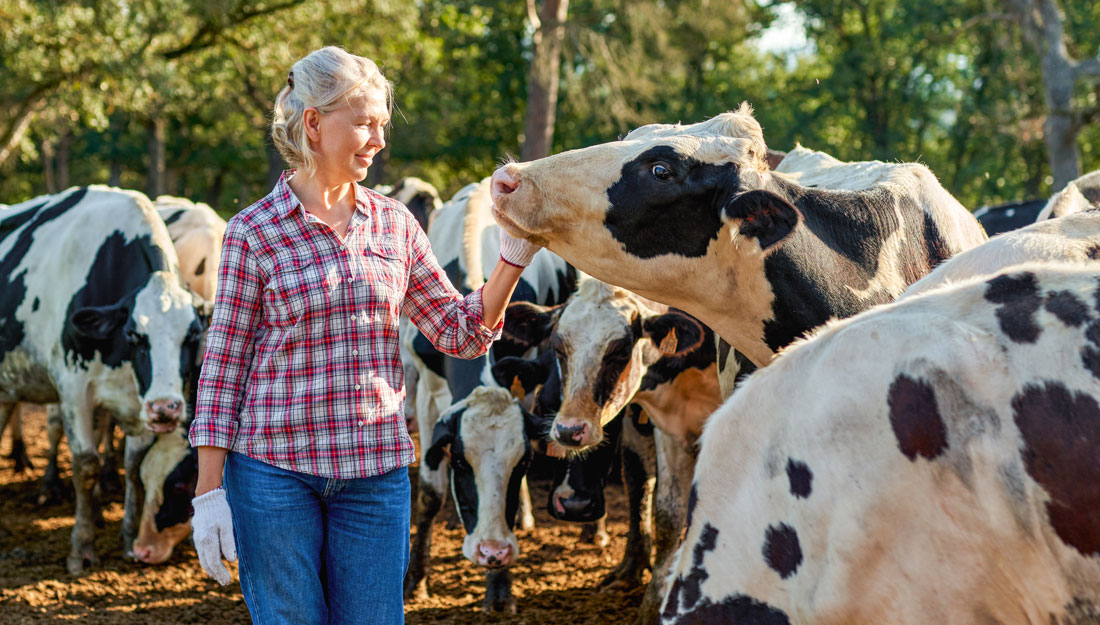Advancing the power of community health workers in rural health initiatives

Texas A&M University faculty members Heather Clark, DrPH, MSPH, and Jane Bolin, PhD, JD, BSN, are leading efforts to support community health workers by developing and providing trainings on critical health issues while also collecting data to better understand the roles these individuals play in rural health initiatives. Clark, who is with the School of Public Health, and Bolin, Associate Dean for Research School of Nursing, presented on the project findings and best practices at the 2022 National Rural Health Association Conference.
They were joined by Brenda Gonzalez, a community health worker who serves as the coordinator for the National Community Health Training Center (NCHWTC), and Dinorah Martinez, another community health worker, in co-authoring the presentation, which was featured on Healio, an online outlet for health news and journals.
The community health worker (CHW) is a less-recognized health care role that is often held by a person who is well-known in their local community.
“They are a trusted member of the community or someone who has a heightened understanding of the community they work with. Often it is a person who people would go to with questions or for help when they don’t know where else to go,” said Clark, who is co-director of the Center for Community Health Development (CCHD). “Community health workers, also known as promotores, are a valuable asset to many different health and health-related agencies, including federally qualified health centers and hospitals. They are a critical liaison between organizations and the populations they want to serve; as such, they are also making their way into private practices.”
Research has clearly shown the efficacy of these roles. Integrating community health workers into preventive health programs has helped patients successfully manage health issues, including: lowering blood pressure, cholesterol and blood sugars; reducing cardiovascular disease; increasing levels of physical activity; and quitting smoking. Additionally, community health workers’ interactions with patients have reduced unnecessary emergency room visits and hospital admissions.
Empowering CHWs through training
The CCHD founded the NCHWTC, which trains individuals to become certified CHWs as well as community health worker instructors. Some of the training that has been developed covers critical health topics such as cancer, diabetes and smoking cessation.
For example, NCHWTC developed the Advanced Cancer Training, Information, Outreach and Navigation (ACTION) project in partnership with the College of Nursing, which disseminates cancer-related trainings to community health workers in rural and medically underserved communities. The trainings are grounded in previous studies that have shown that CHWs’ utilization in cancer screening programs increases awareness, screening rates, referrals and volume of services performed.
ACTION 2.0 builds upon this work, recently launching additional cancer topic trainings. ACTION 2.0 is expected to train 450 Texas CHWs about breast, cervical, colorectal, liver and lung cancer, but has already exceeded that goal in less than three months. Additionally, trainings will be offered to 50 CHW instructors on message training, dissemination skills, and cancer resources that are available for underserved populations. ACTION 2.0 also plans to equip at least 10 programs and/or organizations that utilize community health workers with best practices on prevention, detection, treatment, survivorship and navigation for these types of cancer.
Similarly, CCHD and the School of Nursing are collaborating with the National Rural Health Association to train community health workers at the national level. The Diabetes, Obesity, Nutrition and Exercise (DONE) curriculum is offered annually in both English and Spanish in a different state. This curriculum was originally developed as an eight-hour continuing education offering but was revised to a four-hour online training due to COVID-19. Trainings have already launched in Texas, California and Florida, with two more states to be added in the coming years.
“We know that equipping our community health workers with the latest information has a direct and positive impact on those they serve.” said Bolin. “Oftentimes, the community health worker is the first line of defense in managing, or perhaps preventing, chronic conditions like diabetes or heart disease.”
Better understanding the profession
In addition to offering trainings, the Texas A&M researchers are collecting demographic and work information about community health workers in different states to better understand CHWs at the national level. Clark noted that this research, which is funded by the National Rural Health Association, is designed to understand community health workers’ demographic information, such as age and educational attainment, as well as work environment, including scope of work, job status, preferred modalities of training, and state certification and continuing education requirements.
So far, researchers have collected data about CHWs in Texas, California, and most recently Florida. The states provide an interesting contrast in how CHWs are used, as well as who is filling these positions.
In Texas, 69 percent of the survey respondents were employed as community health workers while 13 percent were volunteers. The majority of Texas respondents had some college or higher education, and their average annual salary in Texas was $38,000, which is near, but still lower than the median non-family household income in Texas ($39,925; Census, 2020). The mean age of Texas’ participating CHWs is 48 years, and 60 percent of respondents were Hispanic, Latino or Spanish origin while 28 percent were Black or African American.
In addition, most of the Texas respondents said their job title was community health workers, although some said they would consider their job title to be a promoter, health educator/aide or outreach worker. The community health workers’ efforts in Texas primarily focused on nutrition, diabetes and community health.
In comparison, California’s community health worker survey respondents’ mean age was 47. Approximately half had some college or higher education, and the average annual salary was $38,434.64, much lower than the median non-family household income of $50,894 (Census, 2020). Slightly more than 80 percent in these roles were held by individuals who were of Hispanic, Latino or Spanish origin, while 12 percent were white. Over 46 percent were employed and another 42 percent reported they were volunteers.
Most respondents from California described their job titles as health promotion, followed by community health worker, health educator, and outreach worker. Additionally, California’s community health workers responding to the survey reported their work focused primarily on nutrition, diabetes and COVID-19.
This survey information will help to inform federal offices such as the National Rural Health Association and the Federal Office of Rural Health Policy on the characteristics surrounding CHW employment.
“We want to better understand what it means to be a community health worker. Based on what I know so far and what I’ve seen in the data, it’s all across the board,” Clark said. “Community health workers really originated as local, trusted community members who served as health educators and outreach workers for hard-to-reach populations, but now what they are being asked to do is all-encompassing. Some have specific jobs that are clinic based, while others have jobs that are wide open. This project will help us better understand how community health workers might be utilized to provide effective, culturally appropriate patient care.”
This project was supported by the Health Resources and Services Administration (HRSA) of the U.S. Department of Health and Human Services (HHS) under grant number 2 U16RH03702-17- 00 to the National Rural Health Association, subcontracting with Texas A&M School of Public Health. The information, conclusions, and opinions expressed in this brief are those of the authors and no endorsement by FORHP, HRSA, or HHS is intended or should be inferred.
Media contact: media@tamu.edu


